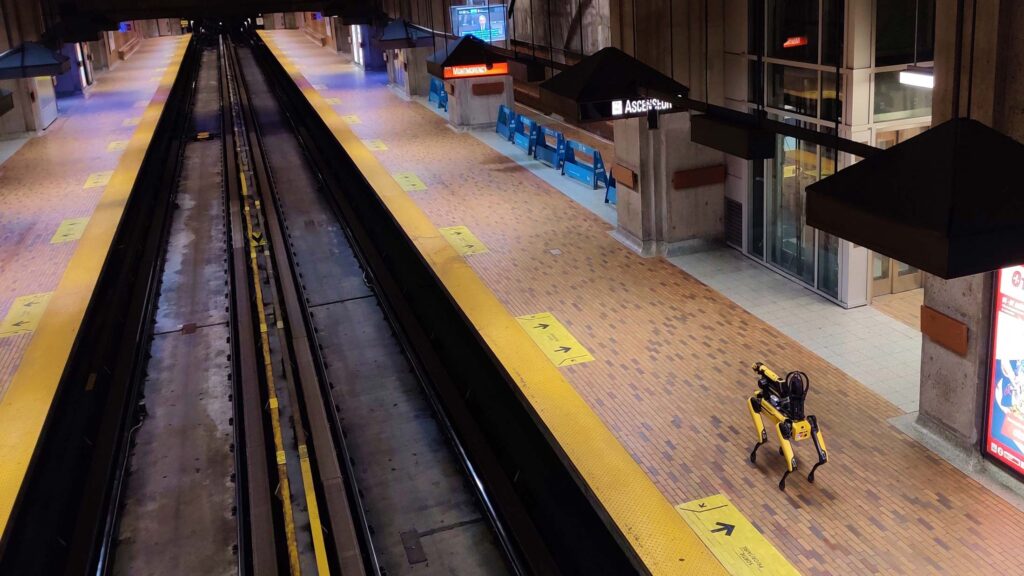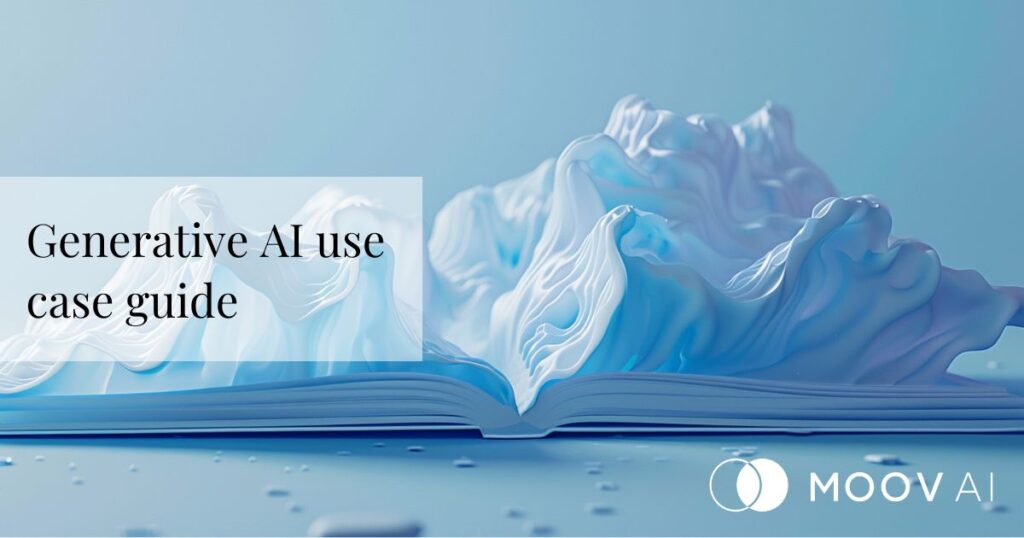With labor shortages on the rise and fewer and fewer hours available to get the job done, you need to make sure your employees are efficient and productive… and working on the right things in the right order. Efficient task management is essential, and generative artificial intelligence (AI) is one solution for optimizing your day-to-day processes.
Generative AI is a strategic solution for optimizing your day-to-day processes. By automating repetitive tasks, this technology analyzes photos and videos to identify necessary actions and generate corresponding tasks automatically. In this way, it enables your staff to focus on crucial tasks at the right time, while freeing up planning teams to focus on higher value-added activities. This article will explore how generative AI can transform your operations, dramatically increasing your efficiency.
Image recognition for more efficient supermarket tasks
Imagine you’re a grocery store manager. You have to manage a mountain of daily tasks that your employees have to perform. You’re also facing a labor shortage. So prioritizing tasks and assigning them efficiently is crucial to keeping your business running smoothly. But fortunately, you’re using AI: your employees are automatically given the right tasks to perform at the right time
From a simple photo of a refrigerator or counter, generative artificial intelligence can identify all the tasks a clerk should perform, taking into account the time of day. Based on the information in the photo, we automatically generated a list of tasks for the clerks
And not just any tasks. By using generative AI well, and integrating data and processes, the right tasks can be suggested. Imagine a platform residing on a mobile device that, following a quick scan of the counters, suggests tasks for the employee to perform:
- Replenish missing products.
- Clean and organize the refrigerator for better product visibility.
- Highlight promotions or products to be highlighted.
- Take inventory of stock to anticipate future orders.
Here’s what the application could look like:
Other task management applications
This technological revolution doesn’t just apply to the retail industry; here are a few other possible applications in various industries.
Logistics: space and inventory optimization
In logistics, space is money. Warehouses and transport vehicles must be used to maximum capacity to ensure profitability.
Generative AI can analyze the dimensions and weights of various products, and understand the constraints of storage space or transport vehicles. In addition, generative AI can identify when items are missing.
AI integration can generate tasks from a photo, such as:
- Identifying missing items: Generative AI can analyze stockroom images to detect missing or out-of-stock items. This visual analysis ensures that inventory is always up to date.
- Generation of replenishment lists: Based on data on missing items, AI can create replenishment lists, simplifying both inventory management and the reduction of replenishment lead times.
- Detection of poorly stocked products: AI can spot poorly stored products, preventing inefficient use of space and reducing the risk of product damage.
- Generating instructions for reorganizing shelves: Based on the detection of poorly stocked products, AI can provide instructions for reorganizing shelves in an optimal way, thus improving space utilization.
Building maintenance and management: anomaly detection
The same technology can be used for building maintenance and safety. Using photos or videos, the system can flag up problems such as water leaks, physical damage such as cracks, and electrical problems.
By identifying problems early on, interventions can be planned before they become critical. This proactive approach prevents minor problems from turning into major ones requiring costly repairs.
By pinpointing anomalies, maintenance teams can be deployed more efficiently. Time-consuming manual inspections are no longer necessary, and teams can concentrate on the areas that need the most attention.
Regular, in-depth inspections powered by AI can significantly improve building safety. By detecting and dealing with problems quickly, the risk of accidents caused by structural damage or electrical problems can be significantly reduced.

Société de transport de Montréal (STM) has implemented such an AI solution to automate maintenance tasks in the Montreal metro. The project was entrusted to Montreal-based Osedea and their dog Spot.
It’s even simpler and more accessible to apply this use case using images from security cameras. Thanks to real-time analysis of surveillance videos, generative AI ensures continuous surveillance, because these robots are very cool and sometimes extremely useful, but on the other hand, they are expensive and difficult to integrate into one’s operations.
Food: Ensuring sanitary standards are met
Food processors must maintain high standards of food hygiene, ensuring cleanliness while maximizing operational efficiency.
AI can transform day-to-day management by making it easier to proactively identify cleaning, replenishment and maintenance needs based on visual analysis. By analyzing photos of facilities and inventory, AI can identify areas in need of cleaning, detect when stocks are low, and flag equipment in need of maintenance. This technology reduces the time spent manually checking stock and equipment, enabling staff to concentrate on food preparation and quality assurance.
Municipality : Management of public and urban spaces
Municipalities face multiple challenges that they must overcome with limited resources.
AI can be used to optimize the management of municipal parks. Instead of making full rounds, AI can precisely target areas requiring intervention. By analyzing images of public spaces, AI is able to identify areas in need of cleaning, detect damaged public equipment and generate detailed maintenance reports for maintenance teams.
This enables maintenance teams to focus their efforts on the areas that need their attention most, saving time and resources. Early detection of damaged equipment by AI also avoids more costly repairs in the long term.
Implementation challenges
Implementing generative AI requires a robust IT infrastructure and integration with existing systems. For a successful implementation:
- Technology assessment: Assess the complexity of integration and ensure that existing systems are compatible.
- Training and adoption: Ensure that users are properly trained to maximize the adoption and effectiveness of the solution.
- Ethical considerations: Comply with data protection regulations and monitor algorithmic biases to ensure ethical use.
It is essential to consider the risks and limitations associated with using these LLMs. Using generative AI tools for business is significant for safe professional use. -> Read full article
Do more with less
One of the main advantages of generative AI is its ability to operate continuously, giving you 24/7 expertise to analyze your environments, identify areas for improvement and propose solutions. This technology optimizes the management of your resources by providing real-time analysis and precise recommendations, enabling you to prioritize tasks more strategically.
Generative AI also facilitates collaboration and communication within your teams, ensuring that all stakeholders have the information they need to complete their tasks efficiently. By automating the creation of tasks from photos or videos, AI ensures smooth coordination and improves operational efficiency.
By integrating generative AI into your daily processes, you not only optimize task allocation, but also enhance decision-making and the overall efficiency of your operations.

Want to discover more use cases for generative AI? This article is an excerpt from our comprehensive guide to the many potential applications of this technology in various sectors. To learn more and find use cases for your field, read our guide now. Read our guide
Moov AI uses generative AI to create this blog.
Here’s how our marketing team is using generative AI to improve this blog. We used a combination of ChatGPT, Copilot and Gemini to generate examples of use cases in various industries, based on a real-life case developed by Moov AI. Parts of the text were generated, corrected and translated with the help of generative AI. The blog header image was also created using the following prompt: A futuristic glassmorphism to-do list with checkboxes and a photo stack, artistic abstract illustration in the the style blobby wavy 3d, blue gradient color in Midjourney. We then used Adobe Firefly, integrated via Photoshop beta, to adjust the image to the correct format.

Olivier is co-founder and VP of decision science at Moov AI. He is the editor of the international ISO standard that defines the quality of artificial intelligence systems, where he leads a team of 50 AI professionals from around the world. His cutting-edge AI and machine learning knowledge have led him to implement a data culture in various industries.